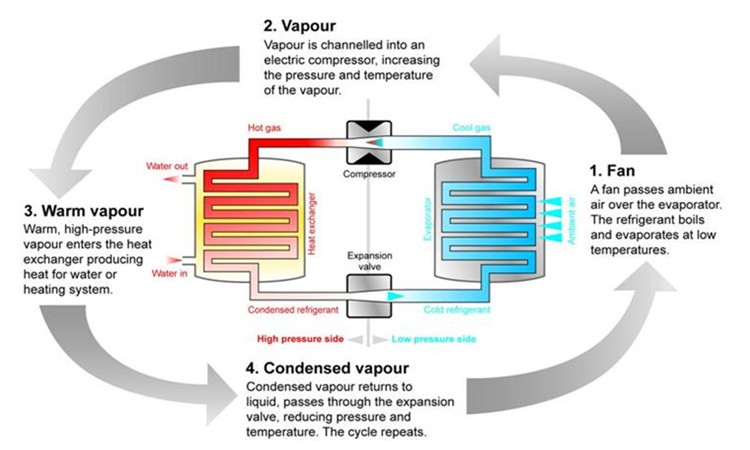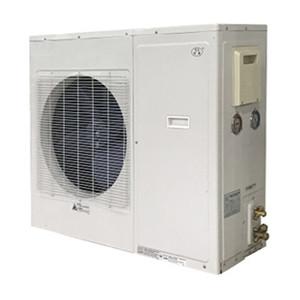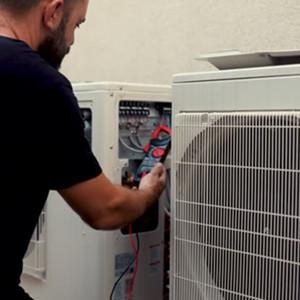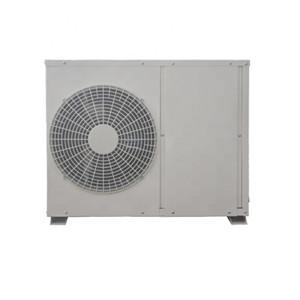Air Source Heat Pump Basics
What is a heat pump?
So, what is a heat pump? Heat pumps are part of a home heating and
cooling system and are installed outside the home. Like an air conditioner like
a central air conditioner, it cools your home, but it also provides heat.
During the cooler months, the heat pump draws heat from the cold outside air
and transfers it indoors, while during the warmer months it draws heat from the
indoor air to cool your home. They are powered by electricity and use
refrigerant to transfer heat, providing year-round comfort. Because they handle
both cooling and heating, homeowners may not need to install a separate system
to heat their home. In cooler climates, hotplates can be added to indoor fan
coils for extra functionality. Heat pumps do not burn fossil fuels like
furnaces and are therefore more environmentally friendly.
What types of heat pumps are there?
The two most common types of heat pumps are air source and ground
source. Air source heat pumps transfer heat between indoor air and outdoor air
and are more popular for residential heating and cooling.
A ground source heat pump, sometimes called a geothermal heat pump,
transfers heat between the air in your home and the ground outside. These are
more expensive to install due to consistent ground temperatures throughout the
year, but are generally more efficient and less expensive to operate.
How does a heat pump work?
How does a heat pump work? Heat pumps transfer heat from one place to
another through different air or heat sources. Air source heat pumps transfer
heat between indoor air and outdoor air, while ground source heat pumps (called
geothermal heat pumps) transfer heat between indoor air and the outdoor ground.
We'll focus on air source heat pumps, but the basic operation of both is the
same.

Heat Pump Basics
Despite the name, heat pumps don't generate heat - they transfer it from
one place to another. The heat from the stove is distributed throughout the
home, but the heat pump takes thermal energy from the outside air (even at low
temperatures) and transfers it to the indoor air. In cooling mode, heat pumps
and air conditioners are functionally identical, absorbing heat from the indoor
air and releasing it through the outdoor unit. Click here to learn more about
heat pumps and air conditioners.
There are several important factors to consider when considering which
type of system is best for your home, including the size of the home and the
local climate. Your local Carrier dealer has the expertise to properly assess
your specific needs and help you make the right decision.
Where do heat pumps work best?
Homeowners who need a new heating or cooling system can consider the
type of climate they live in before purchasing a heat pump system. Heat pumps
are more common in milder climates, where temperatures typically don't drop
below freezing. In cooler regions, they can also be combined with furnaces for
energy-efficient heating on all but the coldest days. When the outside
temperature drops too low for the heat pump to operate effectively, the system
turns to the furnace to generate heat. Such a system is often referred to as a
dual fuel system - it is very energy efficient and cost effective.
An important part of a heat pump system
A typical air source heat pump system consists of two main components,
an outdoor unit (which looks like the outdoor unit of a split air conditioning
system) and an indoor air handling unit. Both indoor and outdoor units contain
various important sub-components.
1. Outdoor unit
The outdoor unit contains coils and fans. The coil operates as a
condenser (in cooling mode) or as an evaporator (in heating mode). Fans blow
outside air through the coils to facilitate heat exchange.
2. Indoor unit
Like the outdoor unit, the indoor unit, commonly referred to as the air
handler, also contains coils and fans. The coil acts as an evaporator (in
cooling mode) or a condenser (in heating mode). The fan is responsible for
moving air through the coils and the ducts in the home.
3. Refrigerant
The refrigerant is the substance that absorbs and releases heat as it
circulates throughout the heat pump system.
4. Compressor
The compressor pressurizes the refrigerant and moves it throughout the
system.
5. Diverter valve
Part of a heat pump system that reverses the flow of refrigerant,
allowing the system to operate in the opposite direction and switch between
heating and cooling.
6. Expansion valve
The expansion valve acts as a metering device, regulating the flow of
refrigerant as it passes through the system, thereby reducing the pressure and
temperature of the refrigerant.
Advantages and disadvantages of heat pumps
While heat pumps are not technically renewable because they rely on a
small amount of electricity from the mains, heat pumps are an efficient way to
keep a home or office building warm. For the UK, which has a fairly mild climate,
heat pumps can work year-round, even in the cooler temperatures we find in
winter. The problem with older buildings is that they produce less heat than
other systems, which means properties that are susceptible to drafts and not
properly insulated will struggle to maintain the right ambient temperature.
Generally speaking, if you have the right property, a heat pump will save you money over an oil or gas based heat source. For example, an air source heat pump can save you around £240 a year, but there are a lot of variables involved, especially the type of system you choose and the type of property you own. You can also benefit from the Renewable Heat Incentive Program, which pays for every kWh of heat your pumps produce (similar to a tariff subsidy for electricity production).





